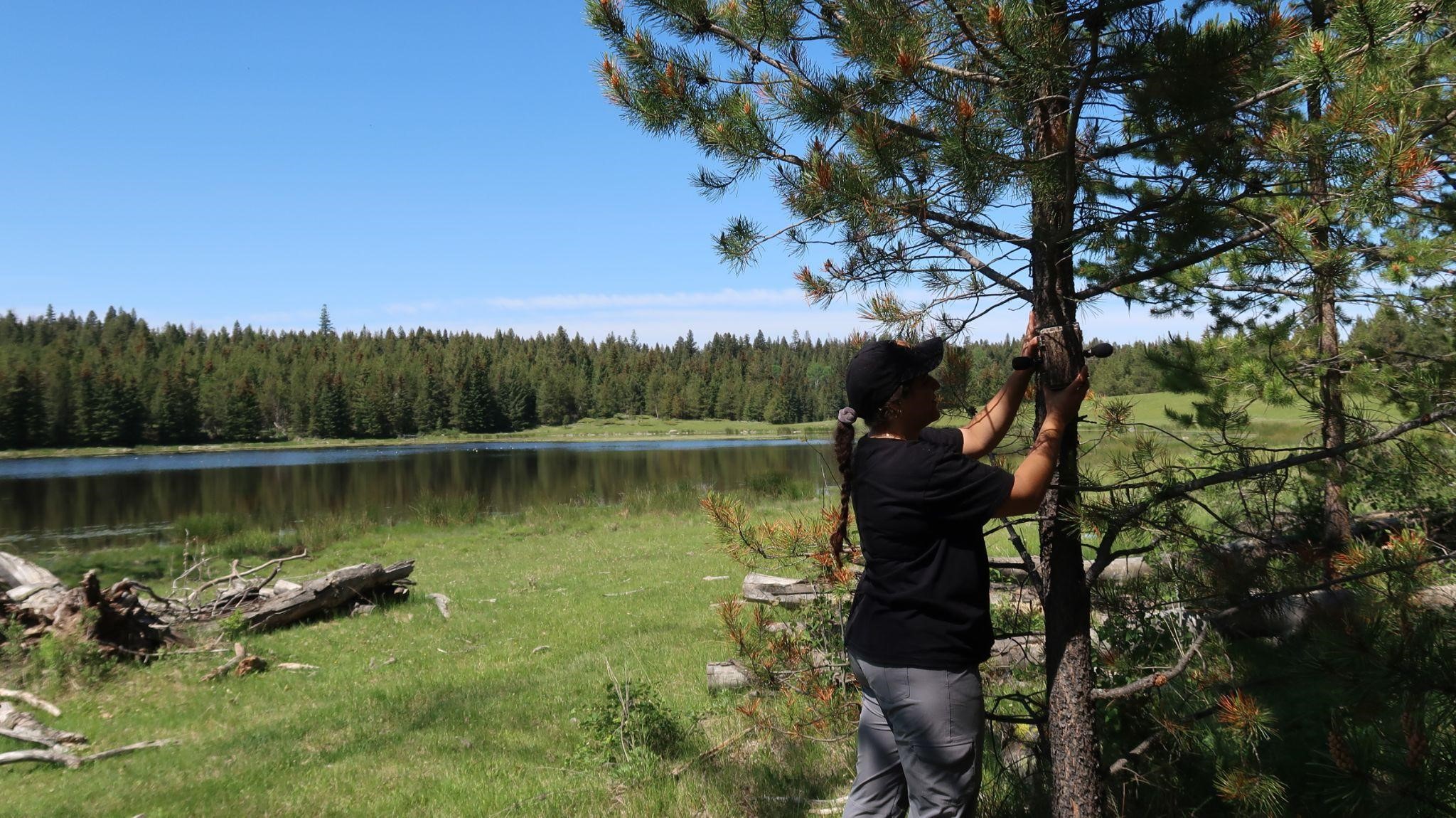By Aicha Hezit, BC Species at Risk Technician, and Lindsay Lalach, BC Species at Risk Biologist
This June, we set out to deploy Autonomous Recording Units (ARUs) at various wetland sites around the Cariboo-Chilcotin region of British Columbia (BC). Our goal was to collect data on the presence of Species at Risk and marsh birds at these sites during their breeding period, which will be used to inform conservation planning with our project partners in Central BC.
Any birder knows the difficulty of detecting secretive marsh birds. They spend most of their time hidden within the vegetation and can be sensitive to our presence, hiding away as we approach. Due to this behaviour, we are more likely to hear them than see them, which makes the use of ARUs for surveying particularly effective.
The Cariboo-Chilcotin region is a beautiful blend of rolling grasslands, pine forests, and countless wetlands and lakes. This made for a great diversity in the bird species we observed, including grassland species such as Western Meadowlark, Eastern Kingbird, and Long-billed Curlew. We also spotted waterfowl and other aquatic birds including Cinnamon Teal, Pied-billed Grebe, and an abundance of Common Loons. We were even fortunate enough to discover a nesting Sandhill Crane!

Virginia Rail. Photo: Mike Poole
We deployed the ARUs at 19 wetland sites throughout the region, capturing approximately 2,750 hours of recordings over three weeks during the breeding season. The ARUs were scheduled to take periodic recordings from dusk until the late morning, allowing us to capture both nocturnal and diurnal species.

Aicha Hezit setting up an ARU at one of the wetland sites in the Cariboo-Chilcotin region. Photo by Lindsay Lalach.
We then converted the recordings through a software into spectrograms – a visual representation of audio wavelengths that indicates the strength or “loudness” of the birds’ songs. There are many benefits to using ARUs for remote data collection.
One benefit is that only two trips to a site are required: one to set up the device and another to retrieve it. This results in minimal disturbance over the period of data collection, ideal for species that are sensitive to human presence.
ARUs also reduce the cost of field work. Analysing the audio recordings can take less time than physically surveying for the same amount of hours. While it does result in a significant amount of data to be processed, technology is currently advancing quickly in this field. Automatic species identifiers are being developed with the use of machine learning that can pick out target species from large amounts of audio recordings without human supervision, allowing for even more opportunities for monitoring and conservation efforts.

A spectrogram displaying the song of a Pied-Billed Grebe and the whinny calls from two different Soras
As we begin a preliminary analysis of the data, we have detected the presence of many marsh birds including Sora, Virginia Rail, Pied-Billed Grebe, and American Coot. We have also had the pleasure of listening to cows, horses, moose, and a lot of obscure splashing of ducks in the water. We hope to identify Species at Risk as we continue to analyze the data in full.
We are excited to continue to exploring the use of ARUs and how this data can help us take action for birds and conservation in BC.
If you want to be involved in the effort to monitor marsh birds, there are a couple of options for you! You can participate in marsh bird surveys for the Marsh Monitoring Program which is run on observations made from volunteers, or you can input any observations of marsh birds on eBird.
